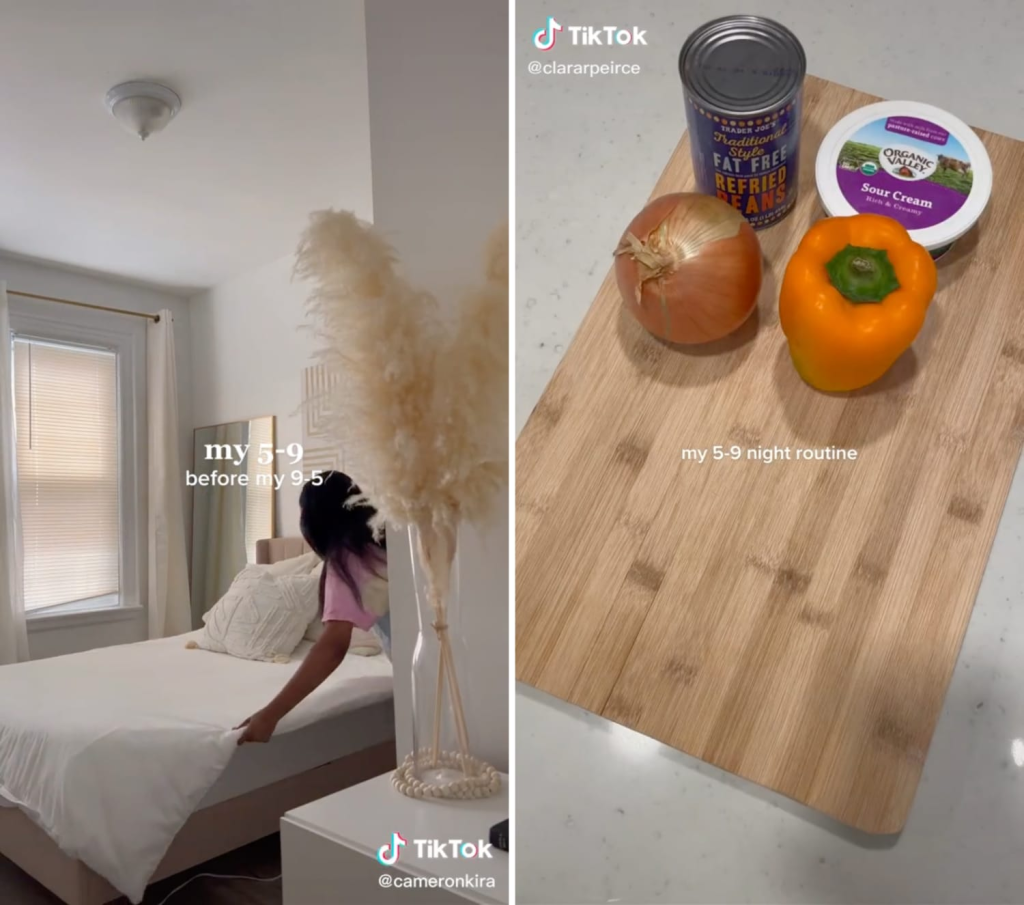TikTok Trends. One trend with proven staying power, “5-to-9 prior to 9-to-5,” documents amazing morning routines.

TikTok is home to hustle culture, despite all the social-media posts about quiet quitting.
“5-to-9 Before 9-to-5” is one trend that has proven to be enduring. It documents impressive morning routines. Most of the videos were shot by women. They show a range of accomplishments, including making the bed, going to the gym and getting dressed. Another variation of the trend showcases evening routines that take place after work from 5 p.m. until 9 p.m.
Professional influencers produce many TikToks that feature luxurious apartments, gyms, and skin care brands. The hashtag #5to9 has nearly 50 million views and many parodies.

Mandy Lee, fashion journalist and blogger draws parallels between the 5-to-9 fashion trend and the “girlboss” era of 2010. She stated that glamourizing being busy was a very important aspect of that time. “It feels like relaxation – and not being productive at all– is still something people consider to be weakness after watching this 5-to-9 trend evolve,” she said.
Tyla Maiden makes fun of the concept in another video. “Let’s be real. You’re getting an 8:45-9 from me, possibly an 8:30 if it’s feeling like,” she stated. “Either one, you’ll know that I prepare a complete breakfast. It’s non-negotiable. I won’t even put on real pants.”
Maiden stated that the video, shot about a week into her new job that allows her work remotely, was meant as a “reality-check” for anyone feeling inferior for failing to complete a list before 9 a.m. The clip is popular and has been viewed more than 260,000 times.
Maiden wrote in an email, “I don’t like how pressure trends like this can put on you to achieve that level of ‘productivity’ outside your full-time jobs.”

Rahaf Harfoush is a digital anthropologist whose Hustle and Float explains the forces that influence hustle culture. This central theme can be found in 5-to-9 videos. It’s easy to track so many aspects of our leisure- Spotify tracks how many music plays, Kindle tracks how many pages you’ve read and iPhone tracks how much screen time you have gotten today.
“It’s very rigid, very strict, and very uniform,” she stated, almost like you’re manufacturing your routine in an assembly line. “I ask myself: “What is the message being delivered here?” This message is that every hour must be valuable and that time should not be wasted.
Harfoush suggested that 5-to-9 videos may be a way to cope and express control after two years of political, cultural and emotional turmoil. “But we need to ask ourselves: What are we losing if we amplify these kinds of narratives?” She agreed. “We’re losing unstructured, messy time. We’re losing spontaneity. We are losing the ability to just exist.
These videos are often captivating, as the millions of viewers have shown. Harfoush explained that even after the pandemic brought attention to the dangers and consequences of burnout in the workplace, the popularity of these videos shows how difficult it is to let go deep-rooted beliefs about the need to always be productive.
Harfoush explained that even though you may feel silly or unable to believe it, there are parts of our brains that are trained to recognize certain narratives, values, and behaviors. “It is not your conscious that you should worry about. It is your subconscious listening that you should be worried about.”




















